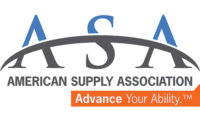In September 2008, ASA signed an Alliance with the
Occupational Safety and Health Administration (OSHA) to provide ASA’s members
with information, guidance, and access to training resources that will help
them protect employees’ health and safety by addressing exposure to hazards
associated with material handling, forklift operations and hazard communication.
This article is the first in a series designed to help ASA members embark on a
path to an effective safety program – one step at a time.
This all sounds good but how to begin? What is step one? The
first step is for you, the Management Team, to decide to incorporate safety
into your corporate culture. This is the most basic and fundamental decision
and commitment that must be made. Once the Management Team commits to the
concept of safety and its importance, the next steps come easily and
logically.
The Management Team must determine their status with respect
to safety and OSHA
compliance. What is your experience
modifier if you have one? This will help
you to understand where you stand in relation to others in the same
industry. If you do not know what your
experience modifier is, talk with your insurance agent to get your current
information. Review what has happened in
the past by gathering data from incidents for the last five years. This data is available from workers’
compensation submissions to your insurance carrier or your OSHA 300 logs. This
information provides you with an awareness of past events and can point to
trends.
For example, is there a specific area where more injuries
occur, are accidents occurring at the beginning or end of a shift, or are
employees performing one specific task when injured? Examination of work
stations where many of the injuries have occurred may be useful, or observation
of work processes may yield important information which can explain why so many
injuries are occurring. The Management Team may want to turn to their insurance
carrier’s safety engineers or private safety engineers for assistance in trend
analysis, hazard assessment and recommendations for modification of processes
to reverse the trends that were found.
The Management Team must also determine how fully they are
complying with OSHA
requirements and recommendations. The compliance calendar the Safety Committee
is currently developing can be a first step in this area. Click on the Safety
Training button on ASA home page to find information on specific requirements
for your industry. Safety Engineers can
also provide useful compliance guidance.
Once the initial assessment is completed, the Management
Team must properly allocate resources to cover the projected implementation
costs of the safety program. This upfront cost can be tempered by the
realization that, according to studies, for every dollar you invest in safety,
you can expect a $4 to $6 return. Implementation costs may include such items
as training materials and seminars, modification of work stations, purchase of
personal protective equipment, purchase of equipment to enhance safety in the
performance of jobs, and employees’ time away from the job to participate in
training or planning.
The Management Team is now ready to begin communicating
their commitment to safety through a kick-off campaign as well as involving
employees in the program through the formation of a Safety Team. The Safety
Team should be made up of both managers and employees selected either from
volunteers or through recommendations from managers. The Safety Team members
will be the leaders of the safety effort and serve as champions of the cause
for safety. The responsibilities of the Safety Team include such things as
reviewing the results of the management assessment and conducting more refined
hazard assessments and compliance evaluations, developing and implementing a
plan to meet the identified safety and compliance needs of the Company and
assessing the effectiveness of the plan implementation.
Education tools have been developed to assist you with your
safety efforts. These tools are called Toolbox
Talks and can be found onwww.asa.netby clicking on the
Safety Training button on the home page. There is one for supervisory personnel
who will be conducting the Toolbox Talks and discusses how to most effectively
use the Toolbox Talk templates. Another Toolbox Talk is entitled “Making Safety
a Priority” and can be used in your kick-off campaign.
Incorporating safety into the culture of an organization
takes time and energy but proves its worth in company after company. Take it
one step at a time and you will find yourself on the path to an effective
safety program, greater productivity and a better bottom line.
Steps to Safety
Looking for a reprint of this article?
From high-res PDFs to custom plaques, order your copy today!




